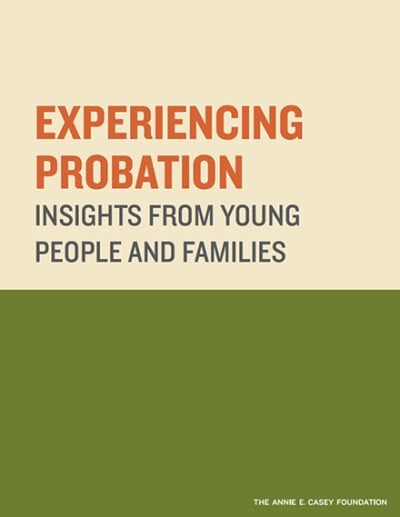Summary
The Probation Experience Project conducted surveys and focus groups with young people and family members who experienced youth probation. The goal? Find out what is and isn’t working in youth probation across multiple locations and share these findings with youth justice practitioners, advocates and policy makers.
Why a Probation Experience Project?
Probation is the most common outcome for young people in the justice system. In 2021, nearly 143,000 young people were on probation nationwide. In most places, probation agencies continue to assume an approach — one rooted in surveillance, control and punishment — that exacerbates a young person’s outcomes. Some jurisdictions, however, are transforming their probation practices to better align with research on adolescent development, advance equitable practices and leverage community-based opportunities and services. Research on probation transformation has illuminated the perspectives of probation agencies and staff, but it has largely overlooked the input of young people and their families who have experienced probation firsthand. The Probation Experience Project aims to address this gap.
Team Research
The project is a collaborative effort among the Annie E. Casey Foundation, Child Trends, young people and family members with probation experience, and local community-based organizations.
These community-based organizations are located in six states: California, New Mexico, Kansas, Indiana, Mississippi and New Jersey. With technical assistance from Child Trends, the local partners hired and trained young people with probation experience to conduct 22 focus groups and survey more than 100 young people and families who have experienced probation.
The local research partners are:
- Camden County Family Support Organization in New Jersey;
- Community Action Board of Santa Cruz County, Inc., in California;
- Progeny of Destination Innovation in Kansas;
- La Plazita Institute and Albuquerque Justice For Youth Community Collaborative in New Mexico;
- VOICES in Indiana; and
- Strong Arms of MS in Mississippi.
Report Recommendations
The Probation Experience Project conducted its surveys and focus groups in a mix of locations with a variety of youth probation systems. Despite this diversity, four common themes emerged from the insights gathered.
These are:
- Make Probation Positive: The culture and practice of probation should shift toward supporting the developmental needs of young people so that they can thrive in their communities.
- Aim for Equity: Youth probation should be responsive to the needs of all young people and families and respectful of a youth’s identity, including their race and ethnicity.
- Strengthen Support Networks: Young people and families should be connected to opportunities, supports and services that can help them thrive.
- Keep Family in Mind: Embracing collaboration and eliminating harmful sanctions can help families better support their young person on probation. For example: Youth probation officials should partner with young people and families to create a more accessible and understandable probation process.
Watch the Foundation's Webinar on This Report and Its Findings






